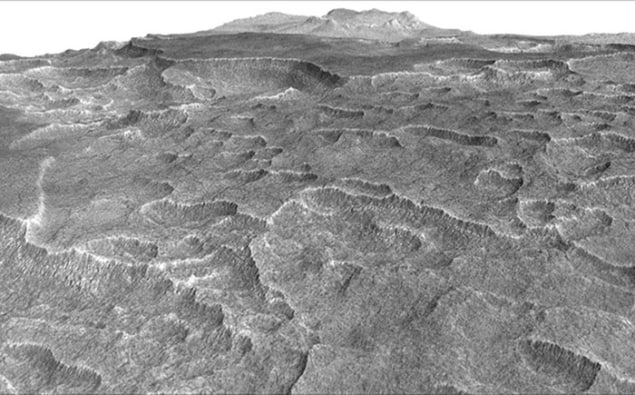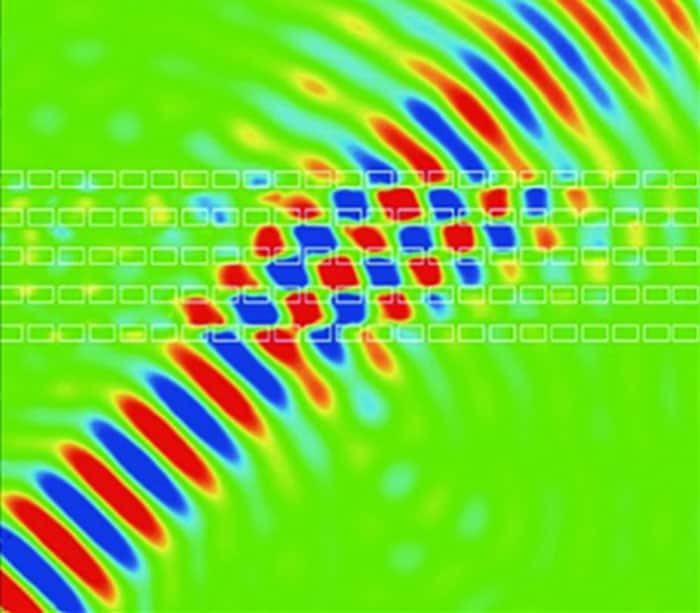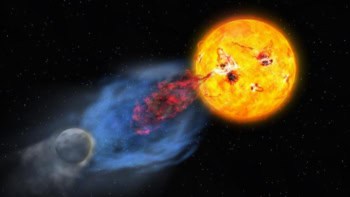Flash Physics is our daily pick of the latest need-to-know developments from the global physics community selected by Physics World‘s team of editors and reporters

Martian ice deposit holds as much water as Lake Superior
An underground deposit of water ice on Mars covering an area larger than Poland and containing more water than Lake Superior – the largest of the North American Great Lakes – has been discovered by Cassie Stuurman of the University of Texas, Austin, and colleagues. The deposit was found in a mid-latitude region called Utopia Planitia using SHARAD – a ground-penetrating radar instrument aboard NASA’s Mars Reconnaissance Orbiter. Its composition varies between 50–85% frozen water that is mixed with dust and larger rocky particles. The ice is buried about 1–10 m under a layer of soil, which the researchers believe stops the water from subliming into the atmosphere. “This deposit probably formed as snowfall accumulating into an ice sheet mixed with dust during a period in Mars history when the planet’s axis was more tilted than it is today,” explains Stuurman. The study is described in Geophysical Research Letters and was inspired by work done by Gordon Osinski of the University of Western Ontario. He noticed that patterns on the surface of Utopia Planitia are similar to those seen in regions of ground ice in the Canadian Arctic (see figure). Water close to the surface of Mars could be used as a resource for future human colonization of the planet. “Sampling and using this ice with a future mission could help keep astronauts alive, while also helping them unlock the secrets of Martian ice ages,” says Joe Levy of the University of Texas.
Trump victory sets the clock back, say climate scientists
“Devastating”, “embarrassed”, “worried” and “set the clock back” were just some of the words used by environmental scientists when asked for their views on the election of climate-change sceptic Donald Trump as US president – according to an article in environmentalresearchweb called “The climate after Trump”. In January, Trump will become the only leader of a major industrialized country to deny the existence of human-caused climate change and he looks set to renege on the Paris climate agreement that came into force on 4 November. “It took the US two decades to go from climate obstructionist to climate leader, and one ugly season to throw it away,” lamented Dan Kammen of the University of California, Berkeley. Other researchers believe that the scientific community was naive to think that better information and more knowledge are enough to convince wider society of the importance of tackling environmental degradation. “We must leave our castles in the sky; we must get out and listen deeply and with empathy, we must stop preaching to the converted,” says Hallie Eakin of Arizona State University.
Metamaterial is transparent at all angles of incidence

An “ultra-transparent” medium that transmits electromagnetic radiation incident from all angles has been unveiled by physicists at Soochow University and the Hong Kong University of Science and Technology in China. The new metamaterial comprises a regular array of alumina bars. These are arranged so that the refractive index within the array is identical to that in free space, regardless of the incident angle of the radiation. This is unlike materials like glass, which has an index of refraction that is greater than air. This means that some incident light is reflected at the surface of glass, and that rays are bent when they travel between the two media. Both of these effects can have distorting effects on light moving through an optical system and cause, for example, the blurring of images. The metamaterial created by Zhi Hong Hang, Yun Lai and colleagues works at microwave frequencies, but writing in Physical Review Letters, the team says that it should be possible to create ultra-transparent metamaterials that work for visible light.
- You can find all our daily Flash Physics posts in the website’s news section, as well as on Twitter and Facebook using #FlashPhysics.



